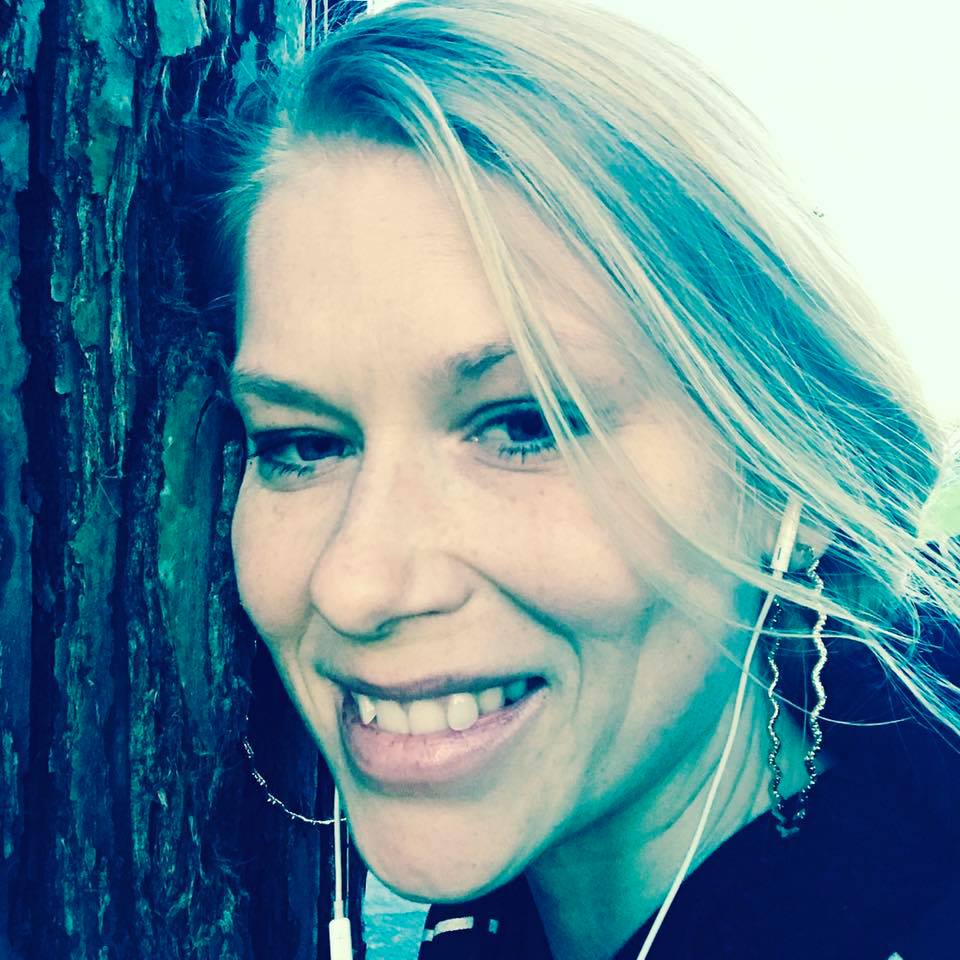By Bill White
•
October 8, 2021
People in your life or professionals may say things like: · You need counseling · You need to work on yourself first · You need to heal you · You need to work on your issues, do your inner work · You need to do shadow work (looking at the things you dislike about yourself and have hidden from others) · You have to make your healing a bigger priority than your work, your relationship, etc. There are many of you who would entertain the idea of ‘working on yourself’ if you actually had some idea of what that is. The road to healing and addressing your inner demons seems vague and unclear to most people. In truth, inner work is often not a clear path. This chapter will attempt to make the path clearer for you. I want to see you empowered on your growth path--not discouraged by the unfamiliarity of it all. There will be people in your life who believe they’re doing fine in life, and that’s great. You may be one of those. However, for those of you who find that things aren’t going so well, this chapter can be a helpful guide for you in your healing and growth process. My mistake—going it alone I have been on a trial-and-error path of healing myself for 50 years, as of 2022. The basic mistake I made was going it alone, especially not getting one-on-one support as often as I needed. I did talk to good friends, and I did a lot of personal growth—reading, workshops, conferences, educational programs—mostly without one-on-one assistance . All this was great and very helpful. However, it would have been much easier to have utilized a personal coach, therapist, or some such. Now, I did at times utilize one-on-one assistance along the way. It’s just that I tended to not enlist assistance enough. Part of the problem was finding someone who is truly adept with my issues. The other side of the coin is that I have been a tough nut to crack. My emotional and relationship wounding in childhood had me not trust others to be good to me, so whenever I went for one-on-one help, inside I was cowering and protected. The 2 previous chapters walk you through understanding the many reasons why it is difficult to ask for help and how to go about finding someone who would be a good fit for you. A skilled person can be the hands-on ‘mirror’ for you to actually get a good, clear look at yourself. Our blind spots can be very tricky to find. Without that one-to-one guidance, we can miss things that will continue to hamper our entire lives. For instance, if as a child you were told or treated as if you were stupid, you have likely created a belief (fear) that you are stupid. At some point the belief that you’re stupid goes unconscious so you don’t know you’re living from the belief. In fact, the belief that you’re stupid operates as an unexamined truth to you. But because you fear it, you are working hard to disprove the belief. So, you have strategies to hide or compensate for that reality that you are stupid. You may become educated, competent, and skilled. No one would suspect you were stupid—not even you. You may also be guarded around smart people so you don’t appear stupid. These strategies that you implement are the things that get in the way and irritate people. You’re trying so hard to not be seen as stupid, and trying hard to be seen as smart, that you are annoying and upsetting to people around you. That was me, by the way. It took me until 55 years old to realize that I had a belief that I’m stupid. I had no idea that belief was running in the background. I found it because I’m focused on ‘working on myself’. If I had not been someone who works on themself, I would never have seen how that belief was getting in my way. Below is a list of steps that describe what working on yourself might look like. This is meant to give you an idea of just what in the hell ‘working on yourself’ means. It will also provide you some ideas on some steps to take. LIST OF STEPS FOR WORKING ON YOURSELF [Don’t be overwhelmed with all the options. Pick one or two that sound like steps you’d like to take. Work those steps first. 1. Make your inner healing a priority . At some point you will recognize that your inner demons are destroying the quality of your life in most, if not all, areas. Some of you may need to make a choice to make your healing more important than your relationship, your work, your hobbies, your drinking, etc. At some points in my life, I have recognized that my inner peace has to be my top priority. Even if I don’t have money flowing or a love life or a great social life, if I have inner peace, the circumstances of my life won’t dictate how I feel. On the other hand, I can have all the money, love life, social life I want, and if I do not have periods of peace within myself, none of that is going to add much to the quality of my life. When it feels like a relationship, a financial windfall, or a new job is adding to the quality of your life, you will find that it is not a lasting addition to inner peace and happiness, unless you are generating that peace within yourself. 2. Recognize that many of your actions are attempts to avoid your emotional and mental pain, OR those actions are an attempt to medicate your pain. We use a myriad of things to have us feel better when we don’t feel good inside. These actions can be done in bits and pieces, or they can be way out of hand. The common ones you will recognize are: alcohol, drugs, video games, gambling, shopping, sex, love relationships, high risk activities, overeating, eating sweets and comfort foods. Some lesser recognized actions we may take to medicate ourselves include sleeping, surfing the computer, dissociating/numbing out, Facebook/social media, overworking, being busy, and being helpful to others (avoiding your life). The list of things we can use to avoid and medicate is endless. I’ve done a lot of them. You don’t have to stop doing all these things, but you want to be aware when you’re doing them solely to medicate and avoid. When you realize you’re medicating and avoiding, then go to work on the inner distress. 3. Get one-on-one support from skilled professionals or mentors . Don’t be afraid to shop around, or to change to another professional or mentor when the one you’re with isn’t working for you. You can also utilize more than one at a time. 4. Talk to people who you trust who can relate to what you’re going through . Share your struggles, your pain. Don’t keep your distress to yourself. When you’re in emotional distress, sharing with someone can cut your distress in half. Then sharing with someone else can cut it in half again. Of course, when you talk to those who don’t relate, who aren’t good listeners, who are judgmental, and who just give you unsolicited advice and suggestions--this can actually increase your distress. Don’t enlist those people to share your heart with. If your friends and family are people who cannot relate well to your challenges, there are places other than therapy where you can generate friends who you can share your pain with--12-step programs, a church/spiritual community, personal growth programs or workshops, Meetup groups. Facebook specialty groups can be a very good option. Group therapy/support is an option as well. In group therapy, you have people dealing with very similar things as you. 5. Understand that possibly 99% of your challenges are not because of the present situation, but are because of the influence your past is having on your present-- particularly unresolved childhood wounds. If you’re focusing solely on the present problem and trying to fix it, and you aren’t getting the results you want, look to see how the present is related to a difficult experience or theme in your childhood. For example, as an adult you may have a sensitivity to being left and abandoned because your father left the family when you were a child. If your partner is late coming home from work, you may freak out worrying about your partner. You need to be aware of the hidden influence of your past before you are able to challenge the validity of an emotional reaction you are having in the present. Making the connection to the past can be complex to do on your own. A book I’m writing, entitled, Advanced Anger and Argument Solutions explains how to do this on your own. The book also discusses that, in the beginning, you likely will need one-on-one guidance to sort out and effectively deal with your emotions. 6. A great access to inner healing is to notice and address where you are emotionally upset—irritated, annoyed, angry, judgmental, fearful, anxious, and sad. Use these experiences to get to the root cause of your feelings—which is typically childhood or other difficult experiences in your past. Again, most people don’t know how to do this on their own. It has taken me decades to have some level of expertise and consistency in this arena. 7. Access childhood when you are feeling very difficult emotions. It is very easy to think that your distraught sadness or panic anxiety is because you have lost your partner, or someone is not being kind to you, or because your job is in jeopardy. Yes, these incidents will bring on distressful emotions in anyone, but if you can’t release the emotions, some aspect of childhood is probably at the root of your emotional distress, and you need to find out what that is. When I amicably ended my marriage, I had 18 months of deep sadness, loneliness, and fear. I just couldn’t shake it. Finally, it occurred to me, “Oh, these difficult feelings may not have so much to do with losing a partner and companion. The feelings I’m feeling may be the feelings I felt as a child. As a child I felt a lot of sadness, loneliness, and fear.” So, instead of focusing on my present woes, I was able to acknowledge long-buried feelings from my past that I hadn’t ever dealt with. The distressful feelings began to lessen when I started making the connection to childhood. And my deeper healing began. 8. Take every opportunity to feel your emotions. I believe that most of our distress in life is because we have been running from or avoiding feeling difficult feelings. Until feelings are faced, and allowed to be, they can’t change. When we feel our feelings, they can move on out. In the moment of feeling a feeling, it may at times not feel like the feeling is moving out. It may or may not happen instantly, but anytime you have the courage to sit with what you’re experiencing that is unpleasant, you are creating a pathway for those feelings to eventually move on out. That is one key reason why I focus a bit on childhood. We didn’t allow ourselves to feel the dreadful feelings when we were young. We also had no one who could assist us with feeling our feelings. We found ways to side-step feelings that we just couldn’t handle. These feeling we haven’t felt are following us today. And we’re still running from them. These feelings can at times truly be excruciatingly painful to sit with. You may need assistance with this. I have worked with people who have had severe emotional reactions and body stress as they started to look at feelings they’ve never dealt with. People opt to ruin their life with addictions instead of feeling these feelings. So, don’t take this work lightly. And get support. 9. Get out of your head and be present to your distressful body sensations. One approach I use is Core Dynamics created by Tom Stone. His theory is that past trauma doesn’t resolve because we have not allowed ourselves to be present to our experience. Trauma and emotional distress show up as aches and pains in the body, as well as general uncomfortableness. Simply focusing your attention on the distress in your body can have it dissipate. Again, as I’ve mentioned, this isn’t easy work, and much of trauma work is not easy. What’s important is that you are making progress. 10. Access other forms of treatment that are designed to resolve past trauma. There’s a multitude of approaches: hypnotherapy, EFT, EMDR, Psych-K, Holographic Memory Resolution, Completion Process, Somatic Experiencing, breathwork, Feldenkrais, inner child work, Hakomi, shadow work, energy healing, meditation, yoga. Even chiropractic and bodywork are important assists to healing the heart and the mind. The body may also benefit from nutritional support. 11. Awareness and acceptance of ‘how you are’ and ‘how things are’ is a more important step than the automatic focus on making changes. When things don’t feel good, our natural approach (if we face it instead of avoiding it) is to find a quick fix--a change in self, others, or your life circumstances. My theory is that when one becomes aware of all the key influences on ones feelings and actions, change can occur easily and sometimes automatically. For example, let’s say you learned as a child that being angry made things worse for you, and you decided to never be angry. Instead, you deny your anger, or cry when you’re angry, or get depressed. When you see what you’re doing and why, and you see the poor results, then doing something different may not be hard at all. As an example of ‘change coming after awareness’, you may find that acknowledging you have anger (as opposed to venting it on someone) is a first step to resolving the feelings and getting your needs met in a healthy way. And you then may find ways to vent anger. Take a run, chop wood, throw rocks, get in your car, without driving, and scream Of course, you also must bring a measure of acceptance to your experience. Awareness isn’t always enough. If you are judging your experience and fighting it, then you don’t deal with it effectively. Take the example of being angry. No one likes being angry. You may not even be able to accept your anger fully. At a minimum, you can bring acceptance by taking the attitude of, “I accept that right now in this moment I hate this anger. I also accept that I want to do anything I can to get rid of it.” So, essentially you are bringing acceptance first to the fact that you don’t accept your anger. 12. Bring compassion to the child who endured very difficult experiences. Don’t minimize the pain the child went through. We generally—and incorrectly--look upon our childhood experiences from an adult perspective. “Yes, my mom was angry and rejecting of me, and my dad spanked me, but it made me a better person.” Or, “I should be over that now. It was a long time ago. And anyway, they loved me and did the best they could.” All that may be true, but it’s also important to understand that for the child that you were , the experience at the time was devastating, terrifying, and extremely distressful. Bring compassion for the child and feel whatever grief and loss that you may feel. Tears are pay dirt for inner healing . 13. Bring acceptance to the parts of you that had to create mistaken beliefs and dysfunctional survival strategies in order to make it in your world. For example, I avoided committing to a career for many years because I was afraid of 1) making a terrible mistake (because of being constantly criticized and sometimes severely punished as a child), and 2) of becoming trapped in a painful situation like I was trapped as a child. When you understand that you had little choice but to create dysfunctional approaches to life, you don’t have to judge yourself. The child’s mind didn’t have the capacity to develop effective approaches. Just notice the approaches the child developed, bring compassion for the child you were, and then eventually you will be able to create more functional viewpoints and actions. 14. Notice and feel the loss to yourself and to others from the fact that you have been living from dysfunctional beliefs and survival strategies that you created as a child. From the example above of my avoiding committing to a career so I could avoid criticism and punishment I got as a child, I can grieve the distress and losses that this strategy created for myself and for others—such as going from one dreary, dead-end job to another. I can also be compassionate and understand that my beliefs and strategies were valid survival responses. They were a desperate attempt to avoid more of the criticism and punishment. 15. Forgiveness of yourself and forgiveness of those who hurt you. Forgive yourself for reacting blindly in an attempt to avoid more pain and to generate love and inclusion. Forgive yourself for the blind strategies of revenge—attempting to get others back for the pain they caused you. You are human. You reacted in fight/flight brain. Also forgive others for what they did or didn’t do. Understand that their pain from their past (or their present) caused them to be the way they are. Sure, they could have done differently, but at the time they did the best they could, given all the influences from the past and present. No, they did not do the best that was possible for them to do. That is a standard that we should not put on others or ourselves. 16. Apologize and make amends where possible and where useful. Our blind survival strategies and viewpoints about life have caused us to hurt others. Apologize and make amends when you can. 17. Commit to treating all people with kindness and respect at all times, no matter how you feel. When we have been wounded in the past or present, we react in ways that hurt others. Being unkind to others will set you back to square one, if not worse. There are many occasions when we are in an anger or fear reaction, which leads us to do things that hurt others. It is especially when we’re reacting emotionally that we bring our will to bear on the situation. No matter how you feel, you have to will yourself to not hurt another no matter what they have done. Use a method to soften your pain. Again, you will be well-served by enlisting assistance from someone to guide you in the process. Also, recognize that imposing your will on another is not kind and respectful—no matter if it’s for their own good. Compassionate Non-Violent Communication (NVC) states that any form of ‘push’ or force is violence. Usually there is An unmet need you have that is creating the drive to push another in a direction you think they should go. Best to identify the unmet need, instead of pushing. When you commit to treating all people with kindness and respect, even when you don’t feel like it, this will greatly enhance your healing and growth process. Without this in place, your path will continue to be very rocky, with limited benefits. Once you’ve done some healing work, you will find you are less reactive in some situations where you would normally have been very reactive. Things can get easier. 18. Let people know you’re working on yourself. Often you have been a jerk and have caused others distress because of your blindness. When you tell someone that you are working on yourself, it shows a softness and a vulnerability. Those who are worth having in your life will be compassionate with your process when they know you’re humble and trying to make changes. Those who aren’t compassionate with you may not be your ‘tribe’ now. 19. Ask others to give you support and feedback in your blind spots. Our habitual childhood survival strategies are often invisible to us. Enlisting the assistance of those who are close to us to help us become conscious when a dysfunctional strategy or viewpoint has kicked in, can be a breath of fresh air in your life and your relationships. For instance, if you have a pattern of automatically ignoring your feelings when you’re upset, rather than dealing with them, your partner or friend who knows this about you can say, “Hey, are you doing your thing of ignoring your feelings?” 20. Listen to others when they’re upset with you. Most of us are not good listeners. (Read my chapter on the art of truly listening in my blog https://www.thehealthycouple.com/the-art-of-truly-listening ) Relationship challenges can be magically reduced if we just give up our need to speak, and fully give our attention to another. Being defensive and talking when another needs to talk sets the conversation up for failure. On the flip side, find people in your life who can also listen to you when you’re struggling with concerns. 21. Do self-love work. I know this is a complete mystery for most of you, as it has been for me. I have written a chapter on self-love that can enlighten you about this. It will guide you in taking steps to loving yourself. One key point about truly loving yourself is that until you love yourself, you will be trying like mad to get love from outside yourself. The problem is, you can’t really let love in if you don’t love yourself first. I know, that is bad news. It’s important to recognize that we don’t feel filled up with others’ love when we don’t love ourselves, but it’s not always pretty when you realize it. 22. Ask God/Spirit/your guides/your higher self/your subconscious for assistance. There have been countless times when I have been miserable and at a complete loss. There is magic in surrendering, getting on your knees, crying, and/or asking for divine guidance and help. Be patient for the divine assistance to arrive. It may be in the next few minutes, the next day, or it may be next week. Once you ask for assistance, it may be that spirit sets you on a path that can bring you the help that you’re asking for. It may take a series of experiences for you to get the message you’re looking for. As a side note, sometimes I think the real reason we suffer is so we will turn to our spiritual nature and connect with our true self. 23. Pay attention to your dreams at night. Whether it’s your spirit or your subconscious, something has the answer to all your problems. Dreams give insight and guidance. Even if you don’t usually remember your dreams, before you fall asleep, ask that you be shown what you need to be shown through a dream. Often when you awake, you will see things in a surprisingly new light, even if you don’t recall a dream. Or you might just feel more peaceful. 24. Meditation. This has been very valuable for many. Similarly for full breathing exercises. In closing, the path of healing your past is not simple. Since it is so complex and so vague, by default we generally do everything we can to avoid dealing with our pain and our past. Unfortunately, what we don’t face and deal with will deal with us. Unresolved or unseen dysfunctional patters tend to become a nest of ‘computer viruses’ that continually create trauma, drama, and distress in our lives. I’ve written about multiple avenues for ‘working on yourself’. Again, my suggestion is to take the one or two ideas from this list that resonate with you and just get started. You can refer back to this list as your healing and growth work progresses. Godspeed. [COMMENTS on this blog post can be made by scrolling down just a bit.] Written and copyrighted by BILL WHITE, M.A. Relationship and Communication Specialist 520-775-1943 Copyright September 2014 Revised 3-15-22




















